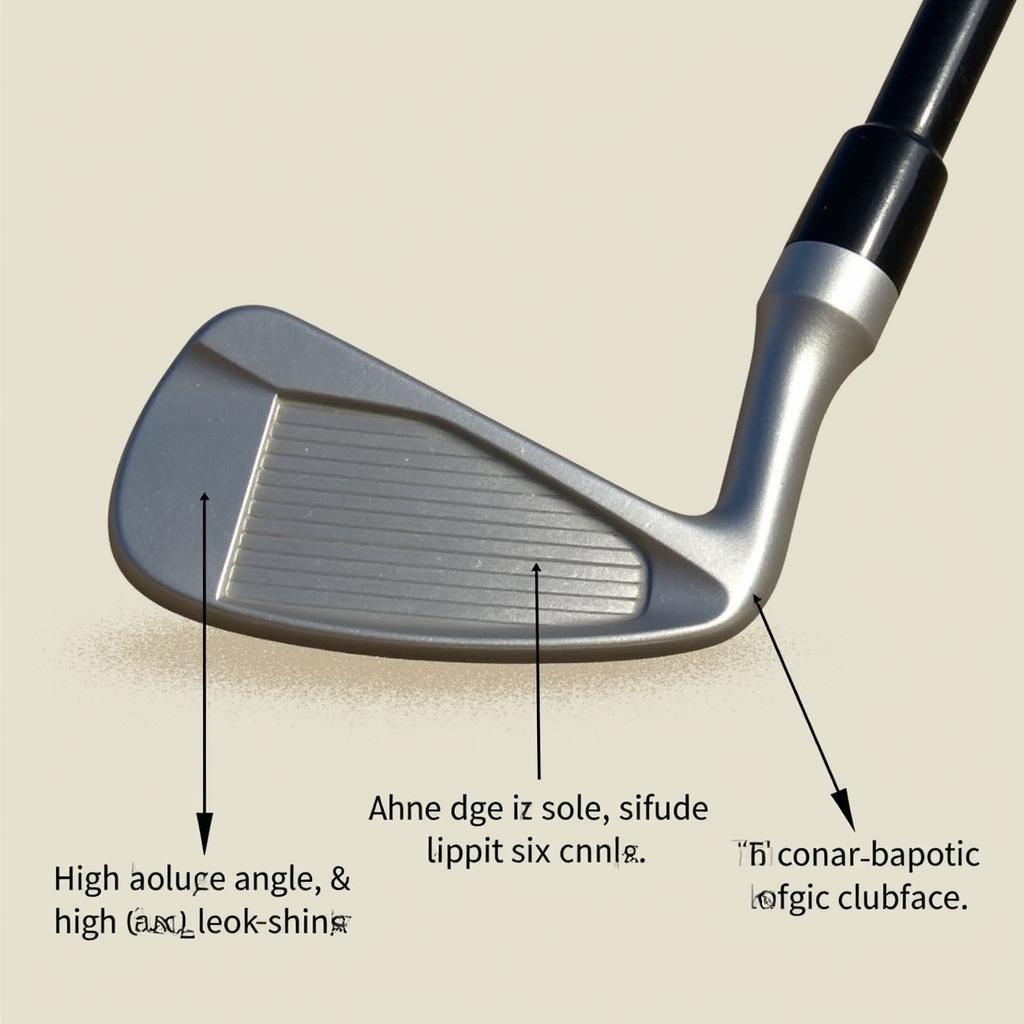Mastering the Sand Save in Golf: A Complete Guide
October 14, 2024The Sand Save In Golf can be one of the most intimidating shots for golfers of all levels. Facing a buried lie in a deep bunker with a high lip can strike fear into even the most experienced player. However, a well-executed sand save can be one of the most rewarding shots in golf, eliciting cheers from playing partners and boosting confidence on the course.
 Golfer executing a sand save
Golfer executing a sand save
This comprehensive guide will delve into the intricacies of the sand save, providing you with the knowledge and techniques to conquer this challenging shot. From understanding the mechanics to mastering the proper setup and swing, we’ll equip you with the tools to escape bunkers with finesse and consistency.
Understanding the Dynamics of a Sand Save
Unlike other golf shots where contact is made directly with the ball, the sand save requires a different approach. The key lies in using the sand wedge to glide through the sand beneath the ball, utilizing the sand’s momentum to propel the ball upwards and out of the bunker.
 Anatomy of a sand wedge
Anatomy of a sand wedge
Key factors that influence a successful sand save:
- Club Selection: The sand wedge is specifically designed for bunker play with its wider sole and higher bounce angle, preventing it from digging too deeply into the sand.
- Ball Position: Positioning the ball slightly forward in your stance allows you to strike the sand behind the ball effectively.
- Open Stance and Clubface: Opening your stance and clubface promotes a higher launch angle and helps the club glide through the sand.
- Accelerated Swing: Maintaining an accelerated swing speed through the sand ensures sufficient energy transfer to lift the ball out of the bunker.
Mastering the Setup and Swing for Sand Saves
Setup:
- Ball Position: Place the ball slightly forward of center in your stance, approximately in line with your left heel for right-handed golfers.
- Stance: Adopt a slightly wider stance than usual, ensuring stability and balance throughout the swing.
- Weight Distribution: Distribute your weight slightly towards your front foot (left foot for right-handed golfers) to encourage a descending blow on the sand.
- Clubface and Grip: Open the clubface slightly and align your grip accordingly, promoting an out-to-in swing path.
Swing:
- Backswing: Initiate your backswing with a smooth takeaway, keeping your wrists cocked and maintaining a wide swing arc.
- Downswing: Begin your downswing by shifting your weight towards your front foot. Maintain an accelerated swing speed, focusing on hitting the sand approximately 2-3 inches behind the ball.
- Follow Through: Continue your swing through the sand, finishing with a high and balanced follow-through. Avoid decelerating through impact.
Practice and Refinement
Mastering the sand save, like any golf shot, demands consistent practice and refinement. Dedicate time during your practice sessions to specifically focus on bunker play.
Practice Drills:
- Line Drill: Draw a line in the sand and practice hitting the sand consistently along the line. This drill helps you develop a feel for the proper swing path and impact position.
- Distance Control: Place several balls at varying distances in the bunker and practice hitting each ball to a designated target. This drill improves your distance control and accuracy.
Conclusion
The sand save, once mastered, can become a weapon in your golfing arsenal, transforming a potentially score-ruining situation into an opportunity for a par or even a birdie. Remember, confidence is key when facing a bunker shot. By understanding the mechanics, implementing the proper setup and swing, and dedicating time to practice, you’ll be well on your way to escaping bunkers with finesse and consistency.
Need help with your golf swing or any other aspect of your game? Contact us at Phone Number: 0915117113, Email: [email protected] Or visit us at: To 3 Kp Binh An, Phu Thuong, Viet Nam, Binh Phuoc 830000, Vietnam. Our team of golf professionals is available 24/7 to assist you.